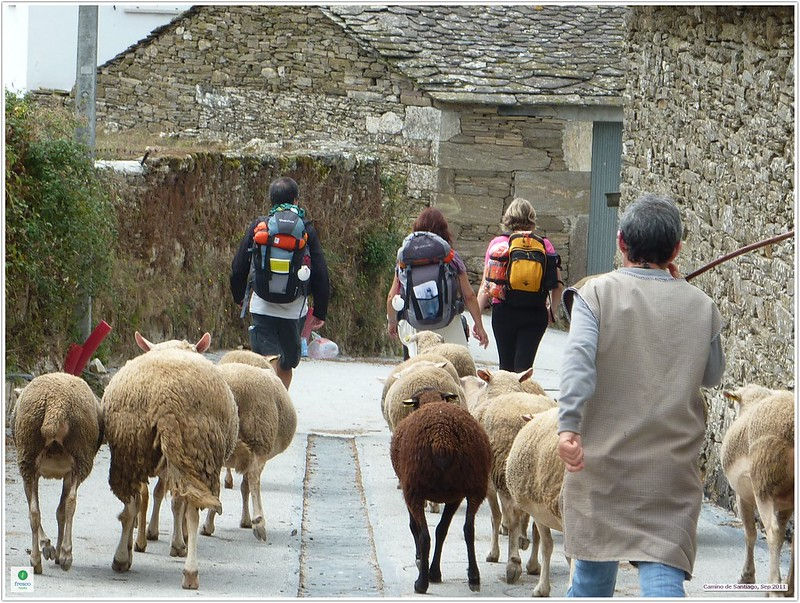Camino de Santiago 2025: A modern pilgrimage in full swing
- Paul Aage Hegvik

- May 28
- 4 min read
Updated: Jun 21
As the 2025 pilgrimage season unfolds, Santiago de Compostela is once again welcoming pilgrims from around the world.

Following a record-breaking year in 2024, with 499,239 pilgrims receiving their Compostela certificates—a 12% increase from the previous year—the Camino de Santiago continues to evolve, blending tradition with modernity.
New developments and initiatives
In response to the growing number of pilgrims, several initiatives have been introduced to enhance the pilgrimage experience:
Digital enhancements: Cities along the Camino Francés, including Burgos, Logroño, and Pamplona, have implemented the 'Camino de Santiago Inteligente' project. This initiative utilizes digital tools and sensors to monitor pilgrim flow and provide real-time information on accommodations, safety alerts, and route updates, aiming to improve the overall experience.
Safety measures for female pilgrims: The 'No caminas sola' (You don't walk alone) campaign has been launched to support female pilgrims. This includes mobile assistance units, bilingual information materials, and the use of the AlertCops app's 'Camino Guardian' feature, allowing pilgrims to share their location with security forces. There have been recent developments concerning safety on the Camino de Santiago, particularly focusing on the well-being of female pilgrims.
In May 2025, the Guardia Civil intensified efforts to inform female pilgrims about available safety resources. This initiative includes the deployment of mobile assistance units, distribution of bilingual informational materials, and promotion of the AlertCops app's "Camino Guardian" feature, which allows pilgrims to share their location with security forces.
Additionally, in March 2025, the first international seminar on safety along the French Way of the Camino de Santiago was held in Villafranca del Bierzo. The seminar addressed concerns such as the elimination of 70 hazardous points along the route in Castilla y León and emphasized the importance of accessibility and the use of new technologies to enhance pilgrim safety.
These measures reflect a concerted effort by authorities to ensure the safety and well-being of all pilgrims, with particular attention to the needs of women traveling alone.
Updated Compostela Requirements: Pilgrims are now required to obtain two stamps per day in their pilgrim credentials throughout the entire journey, not just in the last 100 kilometers as previously mandated. This change ensures a more comprehensive documentation of the pilgrimage.
Cultural Highlights
The city of Santiago de Compostela is currently celebrating the Festas da Ascensión, running from May 28 to June 1, with cultural activities extending until July 1. The festivities include concerts, theater performances, traditional parades, and fairs, offering pilgrims and visitors a vibrant cultural experience.

A royal pilgrimage
Adding to the significance of this year's pilgrimage season, King Philippe and Queen Mathilde of Belgium completed their Camino journey in April 2025, accompanied by three of their four children. Their 700-kilometer trek, which began in 2017, concluded in Santiago de Compostela, highlighting the enduring appeal and personal significance of the Camino.
Diverse array of pilgrims
With the 2025 season in full swing, the Camino de Santiago continues to attract a diverse array of pilgrims, each bringing their own motivations and experiences. The blend of historical tradition and contemporary enhancements ensures that the Camino remains a meaningful journey for all who undertake it.

Facts about the Camino de Santiago
What is the Camino de Santiago? The Camino de Santiago is a network of pilgrimage routes that lead to the Cathedral of Santiago de Compostela in Galicia, Spain. It is believed to be the burial site of Saint James the Apostle. For centuries, pilgrims have walked these routes for spiritual, religious, or personal reasons.
Main routes
Camino Francés (French Way) – the most popular route, begins in Saint-Jean-Pied-de-Port, France
Camino Portugués – begins in Lisbon or Porto, passes through northern Portugal
Camino del Norte – follows Spain’s northern coast from Irún
Camino Primitivo – the oldest route, starts in Oviedo
Camino Inglés – starts from Ferrol or A Coruña, used historically by British pilgrims
Distance and duration
Routes range from 100 km to over 1000 km
To receive the Compostela certificate, pilgrims must walk at least 100 km or cycle 200 km
Pilgrim statistics for 2024
499,239 pilgrims completed the Camino (a record number)
425,042 of them walked
Top nationalities: Spanish (44%), American (8%), Italian, German, Portuguese
Most common starting point: Sarria
Why people walk the Camino: According to the Pilgrim’s Office in Santiago, around 37% of pilgrims in 2024 walked for religious or spiritual reasons. Others walked for cultural interest, adventure, fitness, or personal reflection.
Accommodation: Pilgrims stay in a mix of albergues (hostels for pilgrims), guesthouses, monasteries, and hotels. Albergues are available at low cost but often fill quickly in high season.
Safety and support: Spain provides support infrastructure for pilgrims, including the AlertCops app and the «No caminas sola» campaign aimed at protecting female pilgrims. Some regions now use route sensors and digital tools to manage traffic and safety.
Compostela certificate: Pilgrims can receive the Compostela certificate at the Pilgrim’s Office in Santiago if they complete the required distance and present a stamped pilgrim credential (credencial) from along the route.
Best time to walk: The best months are April through October, with May to September being the most popular and busiest time to walk.







